I'm a hobbist interested in electronics so I don't have any "professional" training on that. Currently I'm trying to design a boost converter and now I'm stuck at some calculations.
I wonder if it's possible to calculate how much the mosfet is going to heat up. I'm using two inductors in series which add up to 134uH and an IRFP460 as the mosfet. The converter runs on 12v and is driven at 4.7KHz with 78.38% duty cycle.

simulate this circuit – Schematic created using CircuitLab
My first idea was to calculate the mean resistance of the inductor which I did by calculating the ripple current through the inductor and dividing it by two: $$\Delta I_{L} = \frac{V_{In} * D}{f_{s} * L} = \frac{12v * 0.7838}{4700 * 0.000134H} = 14.93A$$ $$I_{mean} = \frac{\Delta I_{L}}{2} = \frac{14.93A}{2} = 7.465A$$ $$R_{mean} = \frac{V_{in}}{I_{mean}} = \frac{12v}{7.465A} = 1.608Ohms$$
Then I proceeded to look up the RDS(on) of the mosfet which is 0.27Ohms so when the mosfet is on the total resistance is: 0.27Ohms + 1.608Ohms = 1.878Ohms
So there should be 6.39A flowing through the mosfet and thus 76.68W right? (I = 12v/1.878Ohms and P = 12v*6.39A)
The RthJA (Max. junction to Ambient) of the IRFP460 is 40°C/W so at 76.68W it is 40°C/W * 76.68W = 3067C°!!! This can't be correct that's why I'm asking what I'm doing wrong...
